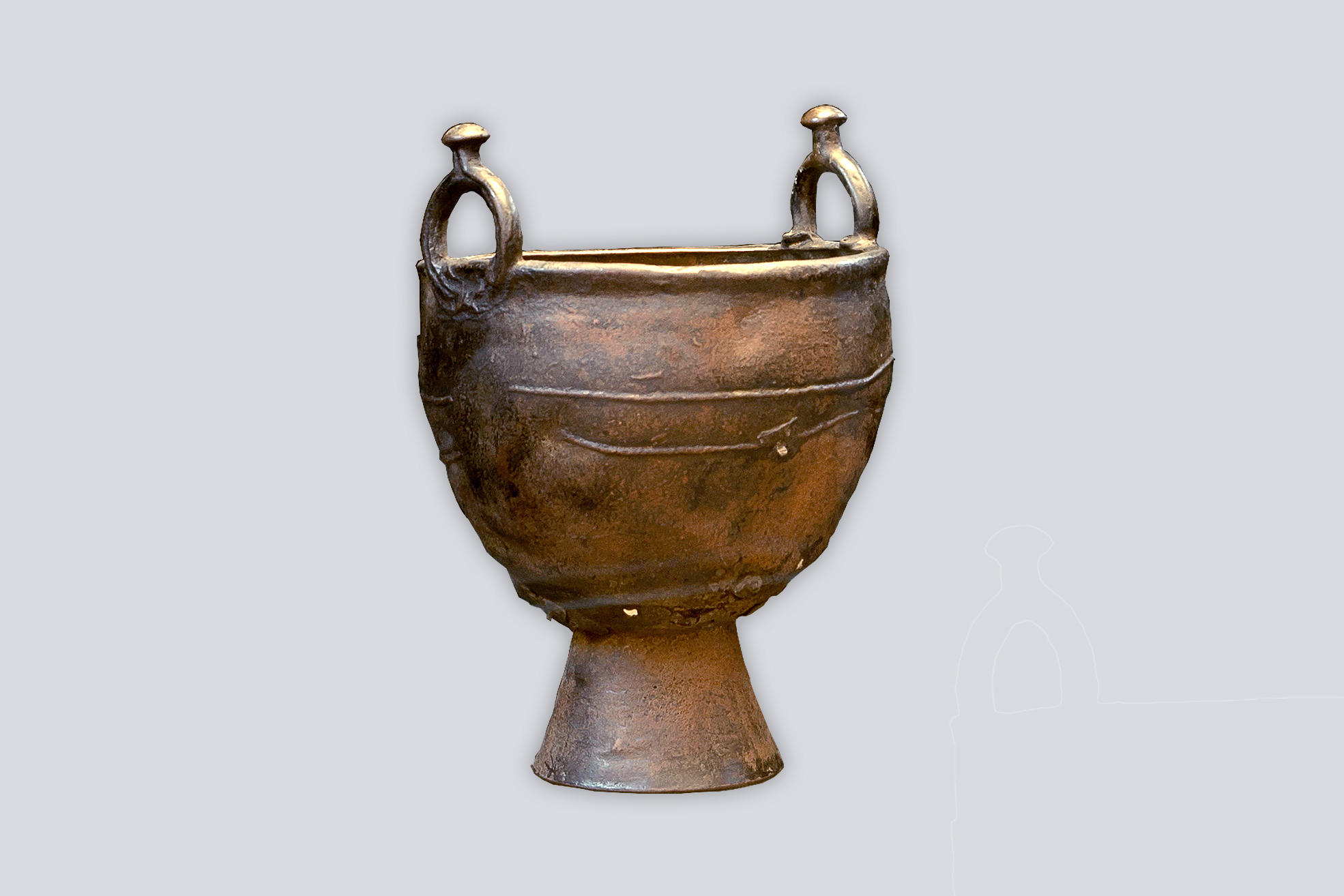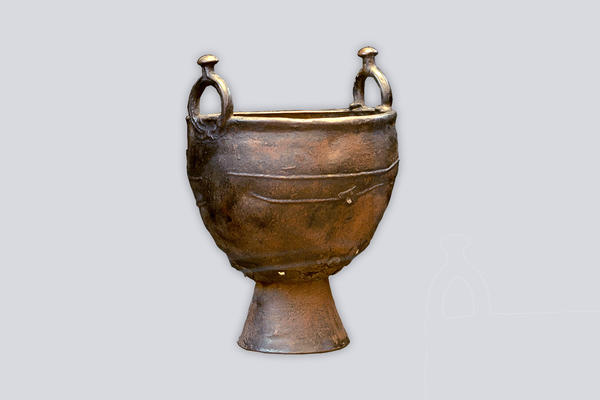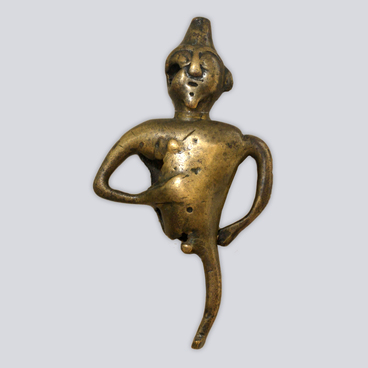Tagar culture got its name from the isle of Tagarsky on the Yenisei River, not far from the city of Minusinsk. It lasted from the 8th till the 3rd century BC. The earliest research excavations of the area were arranged in the 18th century on the initiative of Daniel Gottlieb Messerschmidt, who is thought to be the father of Russian archaeology.
1 / 2
Kettle. Tagar culture
Время создания
6th-3rd centuries BC
Размер
19.5 cm diameter, 26.5 cm high
Техника
bronze, casting
Выставка
1
Открыть в приложении#1
Kettle. Tagar culture
#6
#7
Expeditions discovered numerous articles made of non-ferrous metals. It was proof that in ancient times the local people were not only engaged in farming or animal husbandry but mining, too. Tagar people were famous for excellent copper treatment skills. They often exported golden-hued bronze alloy ingots to other Siberian regions where buyers highly valued such excellent-quality stuff.
It is exactly the high level of metallurgy that helped the Tagar community both to surpass their nearest neighbours in terms of social development and contain the belligerent Hunnu tribes in Central Asia for a longer time. To protect their land, Tagar people used bronze weapons. It required much more sophisticated treatment than iron weapons, the most popular with most other nations of the time, but it was very durable.
#8
The kettle on display was made by the ancient craftsmen of a tin and copper allot. It rests on a conical-shaped pan and has two rings on top with mushroom-like decorative elements. Experts note that the bearers of Tagar culture lost an interest in artistic decoration of household utensils and metallurgists aspired to make as practical items as they could, so the kettle doesn’t impress with decorations. Yet, every vessel was a unique thing, kind of a symbol for each individual family.
#5
Kettles like this were more than just an everyday item. According to Tagar legends, kettles were gods’ gifts, hence their significance in Tagar culture. Vessels would be intentionally installed outside dwellings (yurts, tents, or quadrangular stone buildings) though the hearth would be inside. Quite often, kettles played an important role in various rite, for example, they served as communal utensils during cult meals.
#9
National Museum of the Republic of Tatarstan
читать дальшескрыть
00:00
00:00
1x
Kettle. Tagar culture
Время создания
6th-3rd centuries BC
Размер
19.5 cm diameter, 26.5 cm high
Техника
bronze, casting
Выставка
1
Открыть в приложении
Поделиться



